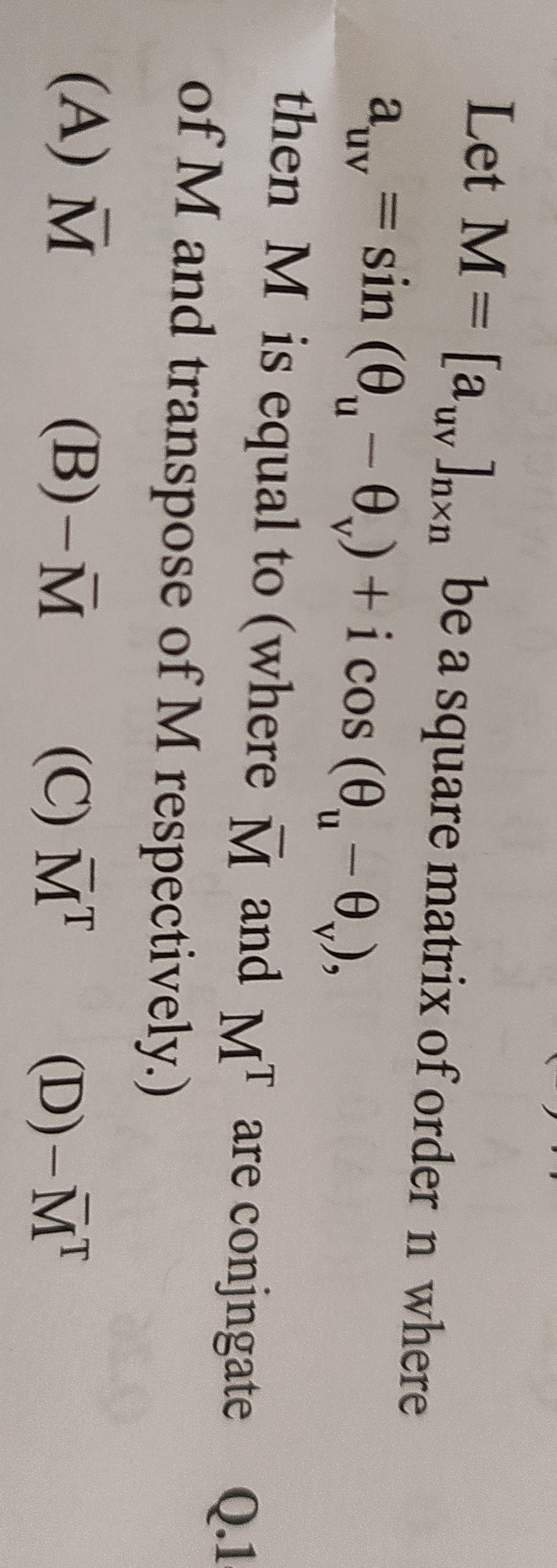Question
Question: Let M = [$a_{uv}$]$_{nxn}$ be a square matrix of order n where $a_{uv}$ = sin ($\theta_u$-$\theta_v$...
Let M = [auv]nxn be a square matrix of order n where auv = sin (θu-θv) + i cos(θu-θv), then M is equal to (where M and MT are conjugate of M and transpose of M respectively.) Q.1

M
-M
MT
-MT
-MT
Solution
Let the matrix M be given by M=[auv]nxn, where auv=sin(θu−θv)+icos(θu−θv).
We can rewrite the element auv using the identity cosx−isinx=e−ix.
auv=sin(θu−θv)+icos(θu−θv)
Factor out i:
auv=i(isin(θu−θv)+cos(θu−θv))
Since i1=−i:
auv=i(−isin(θu−θv)+cos(θu−θv))
auv=i(cos(θu−θv)−isin(θu−θv))
Using Euler's formula e−ix=cosx−isinx:
auv=ie−i(θu−θv)
auv=ie−iθueiθv.
Now let's consider the transpose of M, denoted by MT. The element (MT)uv is avu.
avu=sin(θv−θu)+icos(θv−θu).
Using the properties sin(−x)=−sinx and cos(−x)=cosx:
avu=sin(−(θu−θv))+icos(−(θu−θv))
avu=−sin(θu−θv)+icos(θu−θv).
Next, consider the complex conjugate of MT, denoted by MT. The element (MT)uv is the complex conjugate of (MT)uv, which is avu.
avu=−sin(θu−θv)+icos(θu−θv)
avu=−sin(θu−θv)−icos(θu−θv).
Finally, consider the matrix −MT. The element (−MT)uv is −(MT)uv, which is −avu.
(−MT)uv=−(−sin(θu−θv)−icos(θu−θv))
(−MT)uv=sin(θu−θv)+icos(θu−θv).
This result is exactly equal to the element auv.
So, auv=(−MT)uv for all u,v.
Therefore, the matrix M is equal to −MT.
M=−MT.
This means M is a skew-Hermitian matrix.
